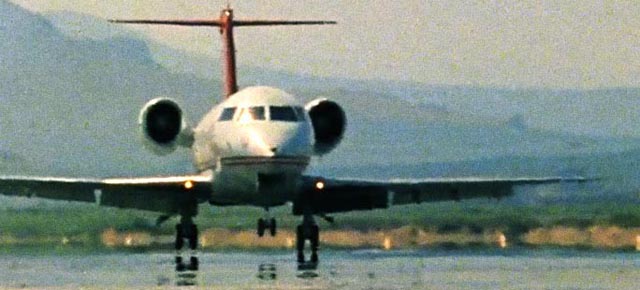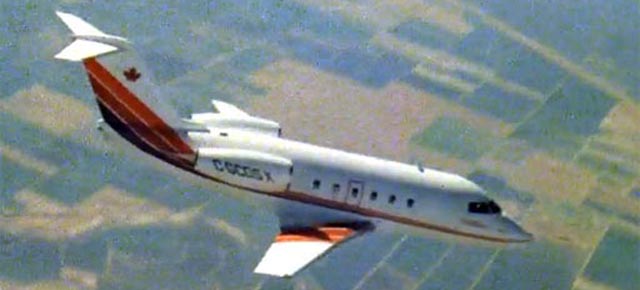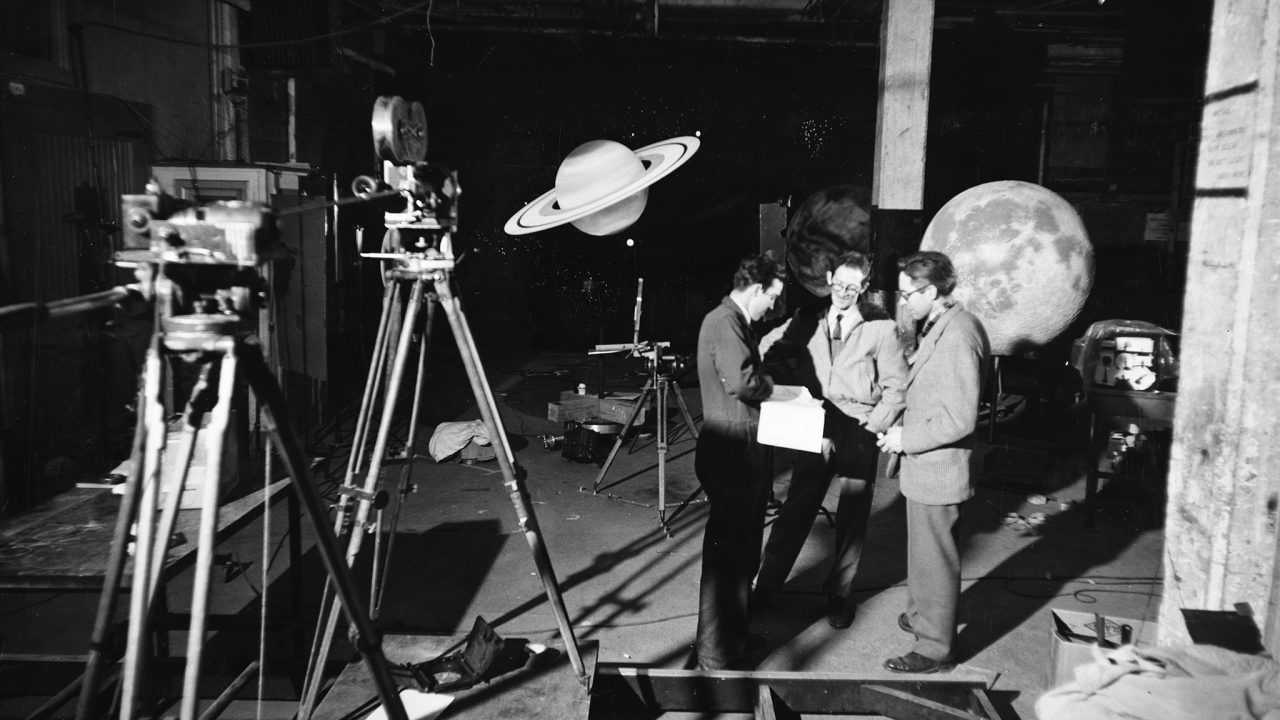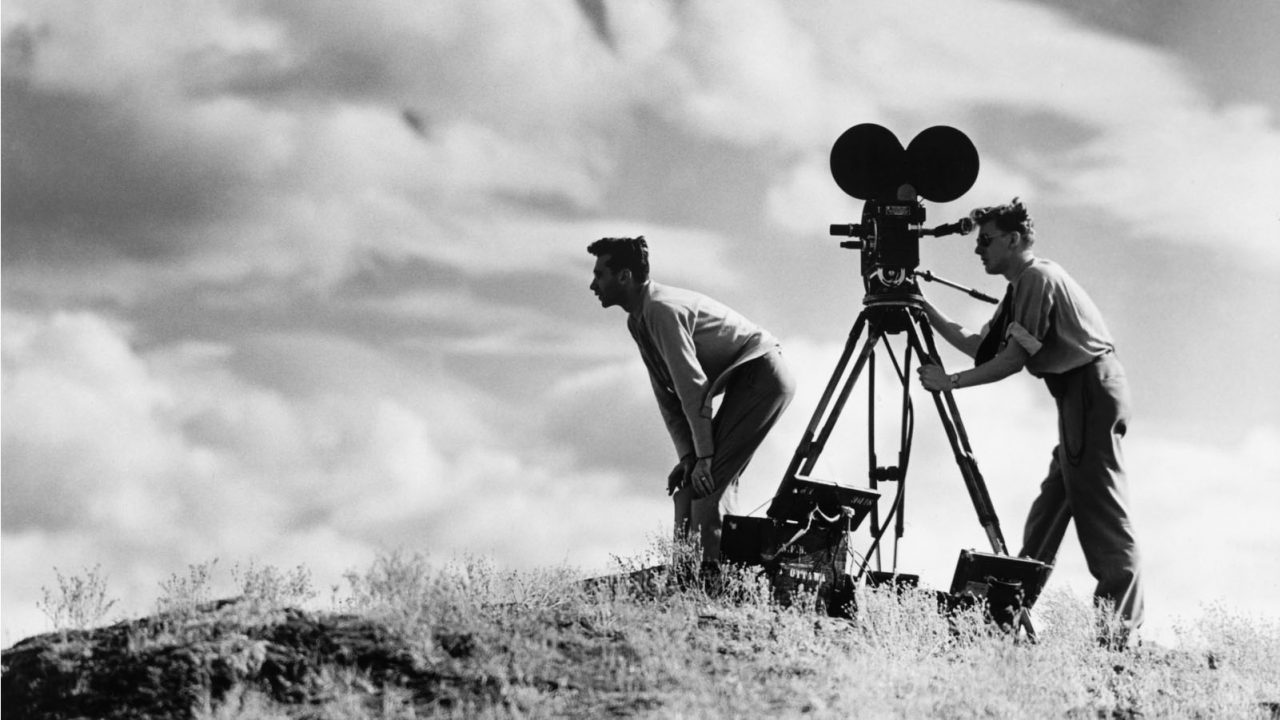
The Challenger: The Great Canadian Aviation Project
The Challenger: The Great Canadian Aviation Project
I am an avid airplane enthusiast. I have been one since my uncle bought me a book about jets for my ninth birthday. Working at the NFB has given me a chance to watch many films on aviation and airplanes. I am such an avid enthusiast that I have compiled a list of every single airplane sequence in all the NFB films I have seen to date, from a DC-3 flying over Nigeria to a Boeing 747 landing at London’s Heathrow airport.
Since we are featuring special aviation programming on NFB.ca this week, I thought it would be a good time to write another blog post on a film about airplanes. I recently spoke to Stephen Low, the director of Challenger: An Industrial Romance (1980), and he shared some details about the film’s production and distribution history with me.
Canada’s aviation history is very rich and diverse, and goes back one hundred years. We have produced passenger planes, bush planes and fighter planes. We had never produced a business jet until Canadair designed and produced the Challenger in the late 1970s.
The Genesis of the Film
Aviation enthusiast Low was working as an assistant cameraman on feature films, dreaming of making his own films, when he picked up The Globe and Mail one day and saw an article about the Canadair Challenger. 50 of these corporate jets had already been sold, even though the airplane was still in the drawing-board stage. Low was so intrigued that he contacted Canadair to see if they were interested in making a film about the Challenger.
The head of public relations for Canadair was very excited by the idea; he told Low that he approved and would help to get the film made. Low then went to the NFB to see if they were interested. Unfortunately, all of his contacts at the NFB passed on the idea—all except Roman Kroitor, who was head of the drama studio in those days. Kroitor told Low that the film should focus more on the people involved in the Challenger story and less on the airplane and the technology.
Low brought staff in from the Department of Industry, Trade and Commerce to see about co-producing the film with the NFB. This government department was involved in the production of the Challenger and was very receptive to making a film that would help sell it. The ministry agreed to finance the film as a co-production with the NFB. Low submitted a proposal for a one-hour film for television and a 10-minute version for theatrical release. The project was approved by the NFB and Low began filming.
Shooting the Film
Low is effusive in his praise for Canadair employees and Roman Kroitor, who gave him carte blanche in making the film. He said that he had full access to Canadair staff and shot wherever he wanted.
Taking Kroitor’s advice to heart, Low focused on several individuals involved in the making of the airplane, including Frederick Kearns, then-president of Canadair, who had been a Spitfire pilot in World War II, and Harry Halton, the chief engineer on the project. Halton had undergone surgery and was close to death when the Challenger design was beginning. It took a visit to the hospital by Kearns to convince Halton to supervise the building of the jet. Though he was confined to a wheelchair, Halton took over and managed the project.
While these characters are fascinating, it is Barry Smith, the “super salesman,” that I find the most intriguing. This man could sell anything. Dynamic, resourceful and exuding confidence, he was exactly what was needed to sell an unknown airplane in the important and highly competitive American business-jet market.
The film chronicles the several years it took to get the airplane from the drawing board to its maiden test flight and beyond. Since this was a brand new concept and basically an unknown airplane, there was a very good chance it could have turned into, as Low puts it, “a 200 million dollar turkey.” Obviously this did not come to pass; the Challenger is still being produced today, and has influenced the very successful Regional Jets that followed it. The film captures some of the intense drama of the daily problems and stresses for all involved. Low shot the bulk of the film on 16mm but upgraded to 35mm for the flight testing of the Challenger in the Mojave Desert.
The Film is Distributed
Low narrated the one-hour version of the film, which was broadcast on the CBC on July 9, 1980, to excellent reviews. A French version played on Radio-Canada the following January, also garnering top reviews. The film was also broadcast on PBS as part of the Masterpiece Documentary series. It played in several festivals and was awarded many prizes, including at the Cindy Awards (held by the Informational Film Producers of America) in Hollywood and the Genies in Canada.
A cut-down 30-minute version of the original film was also requested by NFB distribution in New York. Low worked with an editor and re-wrote the narration but was never happy with this version as he felt it was not long enough to properly tell the story.
Low was not done with the film. The original proposal had called for a separate 10-minute theatrical film. Low put it together using a great deal of the aerial footage that was shot over the Mojave Desert, focusing exclusively on the flight testing of the aircraft. This short, Next Generation, played on Canadian theatre screens throughout 1983 and 1984 as well as in Australia and New Zealand.
Final Thoughts
On re-viewing Challenger: An Industrial Romance (the original long version), I am struck by the fact that focusing on the people involved in the plane’s making was the best thing Low could have done. Only the most avid aviation enthusiast would have enjoyed a purely technical film. Instead, we have a dramatic film with real-life people living this incredible adventure. You don’t have to love airplanes to watch this film. It is essentially the story of a great Canadian project, filled with interesting characters and plenty of plot twists. I invite you to watch it and be enthralled by its wonderful story and characters.
Enjoy the film.
(Aviation enthusiast alert: The film contains footage of the ill-fated Avro Arrow in flight as well as of the little-known Avro Jetliner.)
Challenger: An Industrial Romance, Stephen Low, provided by the National Film Board of Canada






Que de souvenirs! J’ai travaillé pendant près de 5 ans sur les machines NC Cincinnati gantry (à Ville Saint-Laurent, Qc) que l’on voit à 3 minutes dans le documentaire. C’était vraiment de vrais monstres ces machines 🙂
I stumbled across this classic bit of documentary film today while trying to track down some other bit of Canadair trivia. Well done, and it does give a good overview of what was involved in bringing this project to life. As a longtime Canadair/Bombardier employee, like many of the people in the film (many of whom sadly are no longer with us) I can safely say that this barely scratches the surface, and that there are many more stories/chapters here, some of which probably couldn’t be made public! It brought back many fond memories; I’ll pass the link on to some of my former colleagues. Thanks again.
I was involved in interior completion outfitting of the Challenger 600 and began technical training in the summer of 1980. We watched the short version of this film. The longer version is a big improvement. We were all shocked and saddenedwhen we learned that S/N 1001 had crashed during testing.
The aircraft has been a resounding success over the past 35 years. In fact it has paid for nearly everything that I own in one way or another. Thanks to all involved.
Thank you for this documentary. I have flown evolutionary types of the original 600 (604 & 605). They are very comfortable aircraft and still sport a class leading cabin. Compared to newer types, performance may not be quite as good anymore, but I enjoyed flying them tremendously.
Thank you very much for the documentary. I felt nostalgic after watching. I had a chance to work for Canadair Ltd at that time, years after this first flight. Some video sequences showed department where I worked on the fuselage and its sub-assemblies. This was one of the greatest part of my life because I spouse momentarily what I shared during so much years when I was a kid…